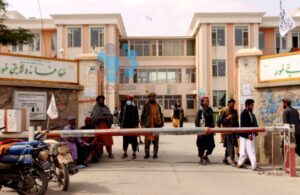KABUL (SW) – The Ministry of Energy and Water has proposed a plan to the Deputy Prime Minister for Economic Affairs, according to which Afghanistan will become self-sufficient in electricity production in the next five years.
Mutiullah Abid, the spokesperson of the Ministry of Energy and Water, tells Salaam Watandar that with the implementation of 200 small and large projects in the sector of power, Afghanistan will reach self-sufficiency in electricity production.
These projects include the Surubi 2 project with a capacity of more than 120 MW, the Herat wind power project with a capacity of 200 MW, and the Bagh-Dara Dam with a capacity of 246 MW.
“Through the efforts of the ministry’s leadership, five-year plans have been formulated for the energy and electricity sectors. These plans aim to foster balanced development across the entire country. These plans encompass not only the construction of small and large dams but also include reference channels and projects for electricity production and distribution,” added Abid.
Afghanistan is currently facing a shortage of 380 megawatts of electricity and more than 60% of citizens do not have access to power.
According to the statistics of the Ministry of Energy and Water, 80% of the country’s electricity needs are imported.
Officials in the Da Afghanistan Breshna Sherkat (DABS) say that a large part of the needed electricity is purchased from Turkmenistan, Tajikistan, Uzbekistan, and Iran.
Hekmatullah Maywandi, the spokesperson of DABS, says: “Only 20% of the needed electricity is supplied from domestic sources, and the rest is imported from four neighboring countries such as Iran, Turkmenistan, Tajikistan and Uzbekistan.”
Electricity Shortages, Particularly in Winter, Pose a Significant Challenge for Citizens. Afghanistan Allocates 280-300 Million USD Annually to Purchase Power from Neighboring Countries.
ENDS






